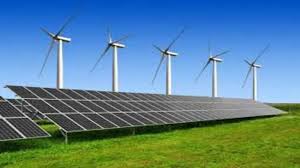Energy Statistics India 2025:

The National Statistics Office (NSO) released the Energy Statistics India 2025, detailing energy production, consumption, and import trends for FY 2023–24.
- The data shows India’s strong energy recovery post-COVID and reflects efforts toward Viksit Bharat 2047 vision.
- Primary Energy Supply rose by 7.8%, reaching 9,03,158 KToE, showcasing resilience and recovery.
- Coal remains dominant, with 79% of total domestic energy supplied and 60.21% share in TPES.
- Renewable energy potential reached 21,09,655 MW, with wind and solar leading.
- Electricity from renewables rose from 2,05,608 GWh (2014-15) to 3,70,320 GWh (2023-24) at a 6.76% CAGR.
- Per capita energy consumption increased to 18,410 MJ/person, a 25% rise in 10 years.
- Renewables expanding fast: Installed capacity rose from 81,593 MW in 2015 to 1,98,213 MW in 2024, CAGR of 10.36%. E.g., Rajasthan, Gujarat, Maharashtra lead in wind and solar installations.
- Industry-led growth: Final energy use by industry rose by 13.2%, driving economic productivity. E.g., From 2.4 lakh KToE (2014-15) to 3.1 lakh KToE (2023-24).Reduced T&D losses: Losses fell from 23% (2014-15) to 17% (2023-24), improving efficiency.
- Renewables outperform fossil fuels in pace: Non-hydro renewables grew by over 210% in 10 years.
- Energy required per INR of GDP dropped to 0.2180 MJ/INR, showing decoupling of energy from growth.
- Coal still contributes 79% of energy supply and 60% of TPES. E.g, Non-coking coal alone accounts for 93.3% of coal production
- Heavy import reliance: India imports 89% crude oil, 46.6% natural gas, and 25.86% coal.
- Per capita electricity uses still low: At 1,106 kWh/person, India trails global average (~3,000 kWh).
- Slow renewable share in actual generation: Despite capacity growth, renewables still not mainstream in total energy mix.
- Urban-rural divide: Rural consumption and accessibility lag behind urban industrial and residential demand.




